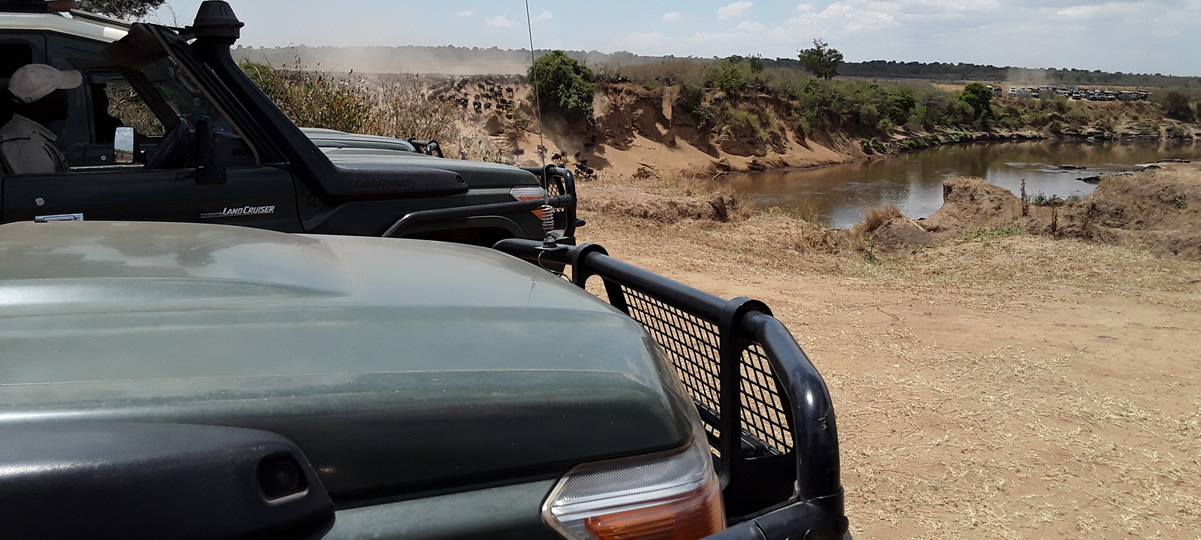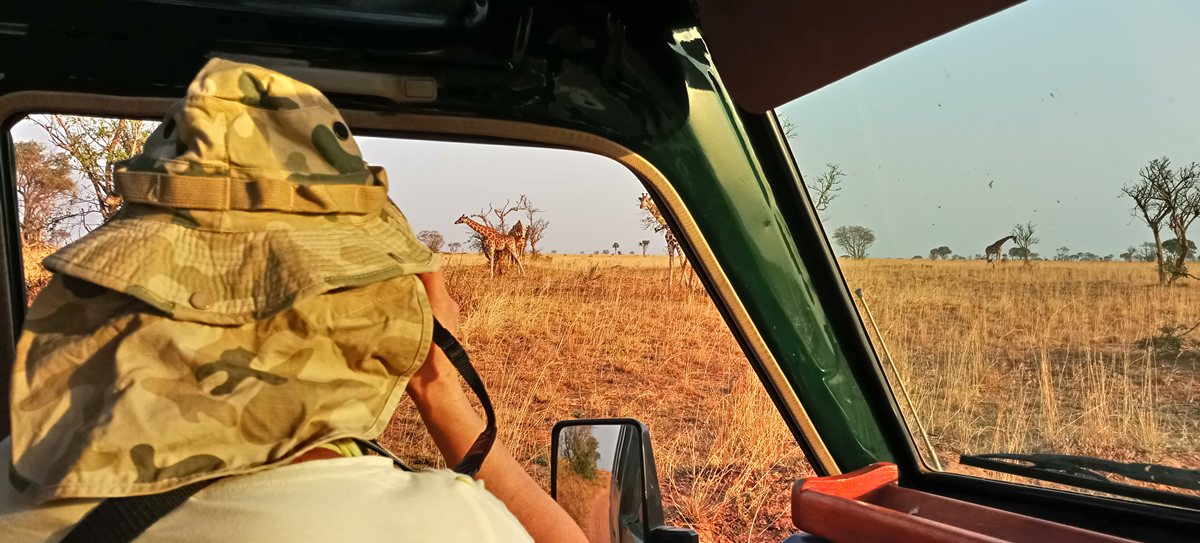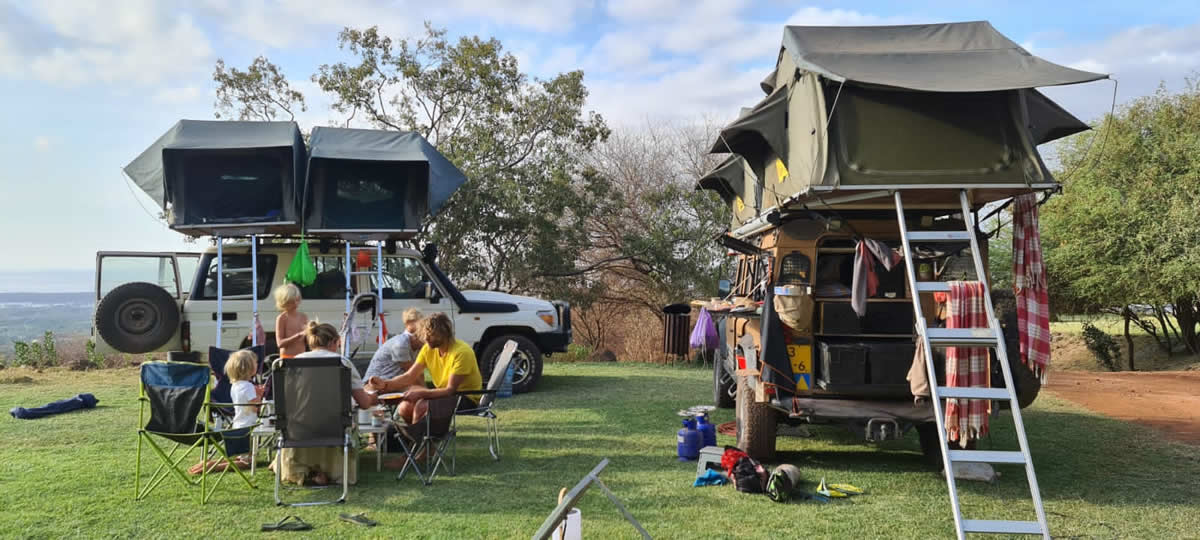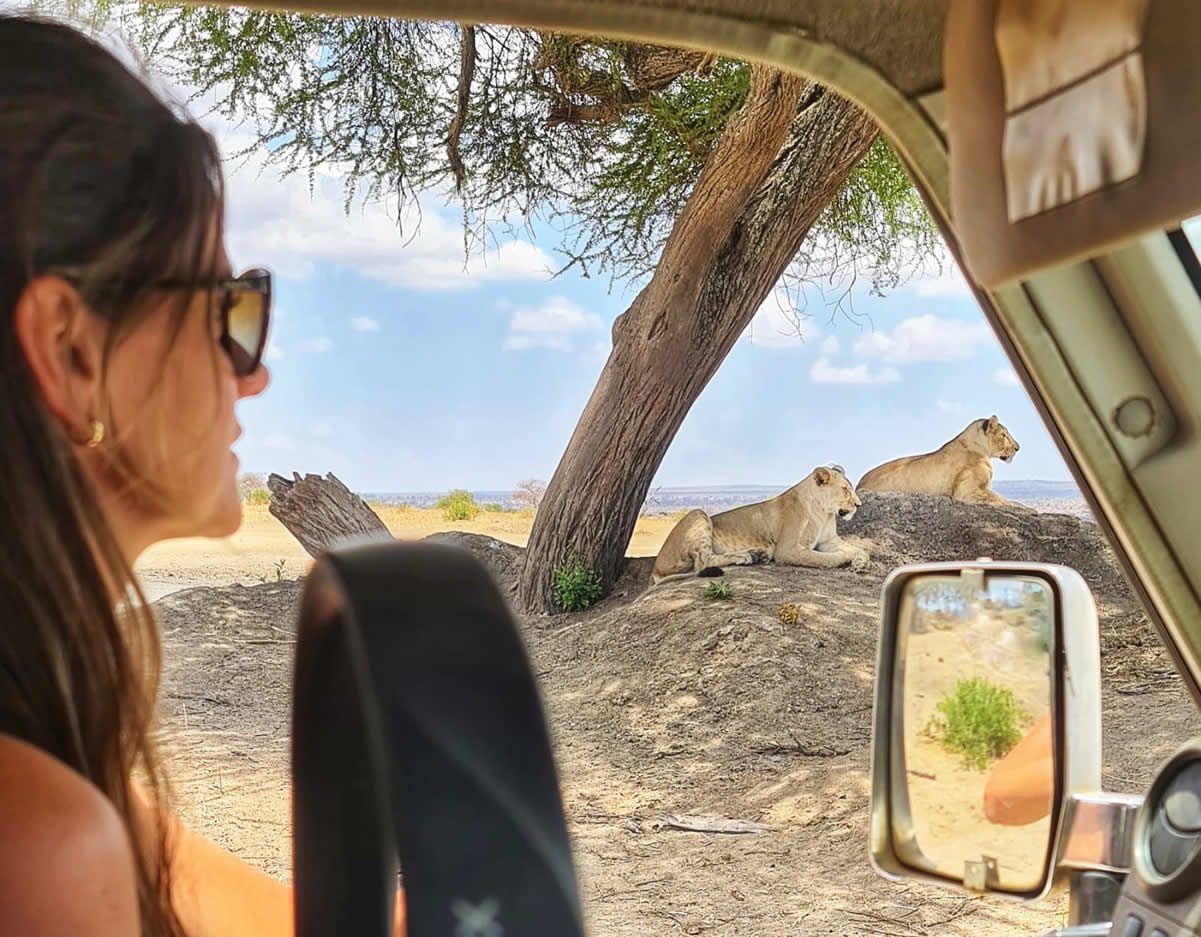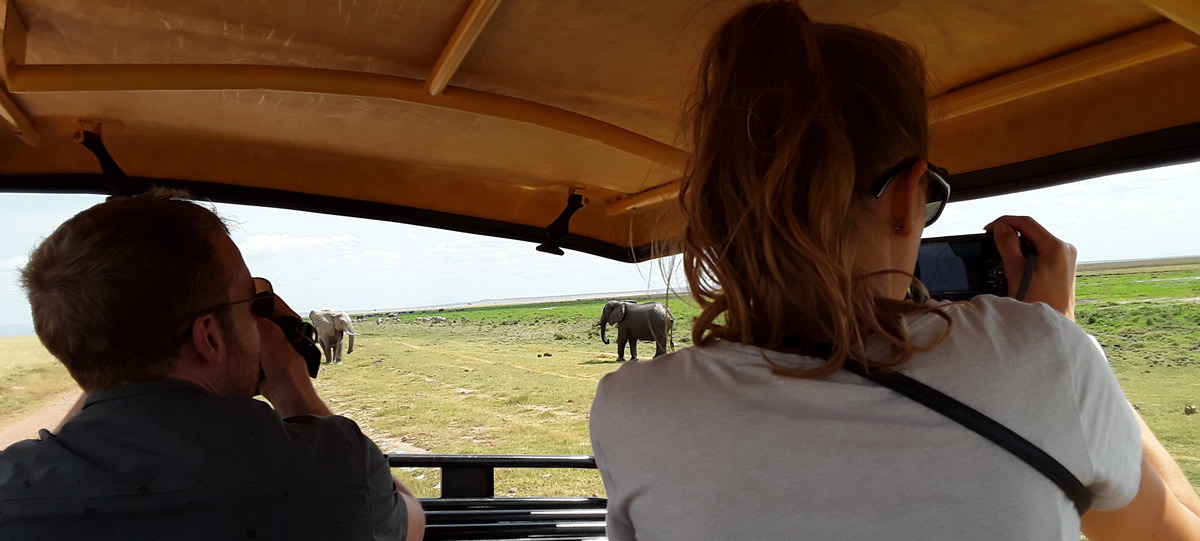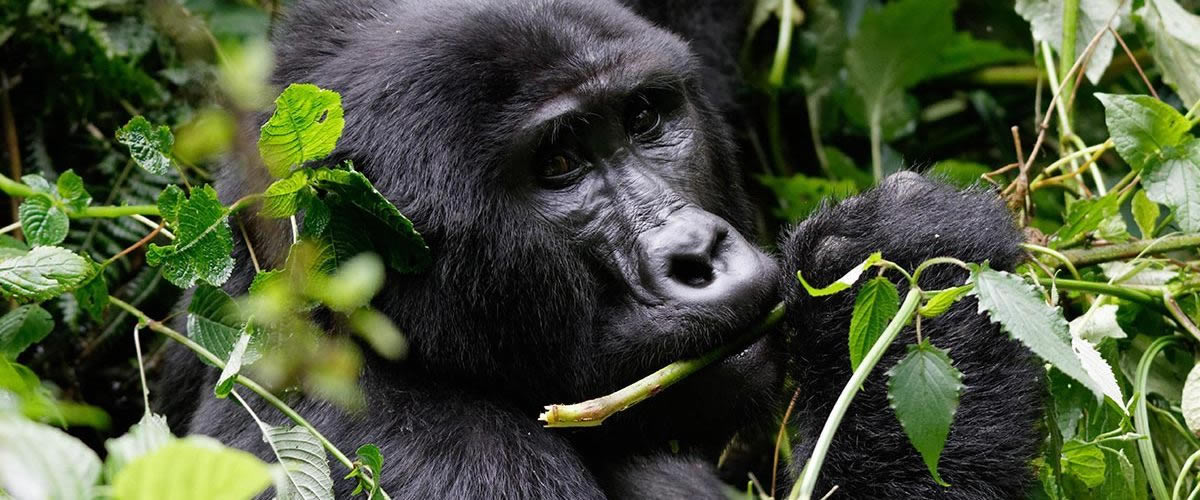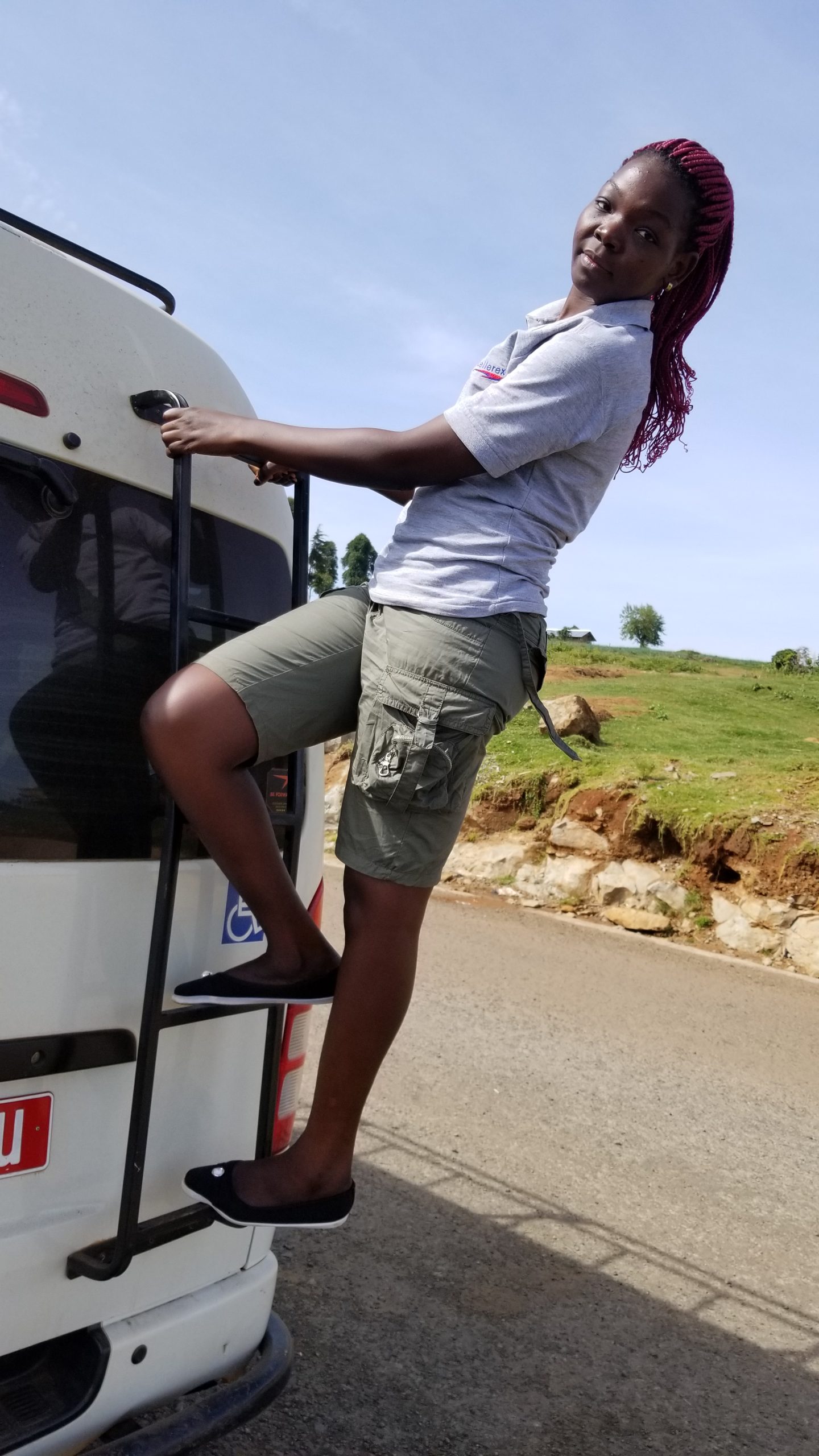The Ultimate Guide to Kenya Self Drive Safari Experience
The Ultimate Guide to Kenya Self Drive Safari Experience with best Kenya (mostly visited) National Parks, places to visit in Nairobi & Honeymoon destinations.
A Kenya Safari Experience is without a doubt, one of the most authentic experiences in the African continent.
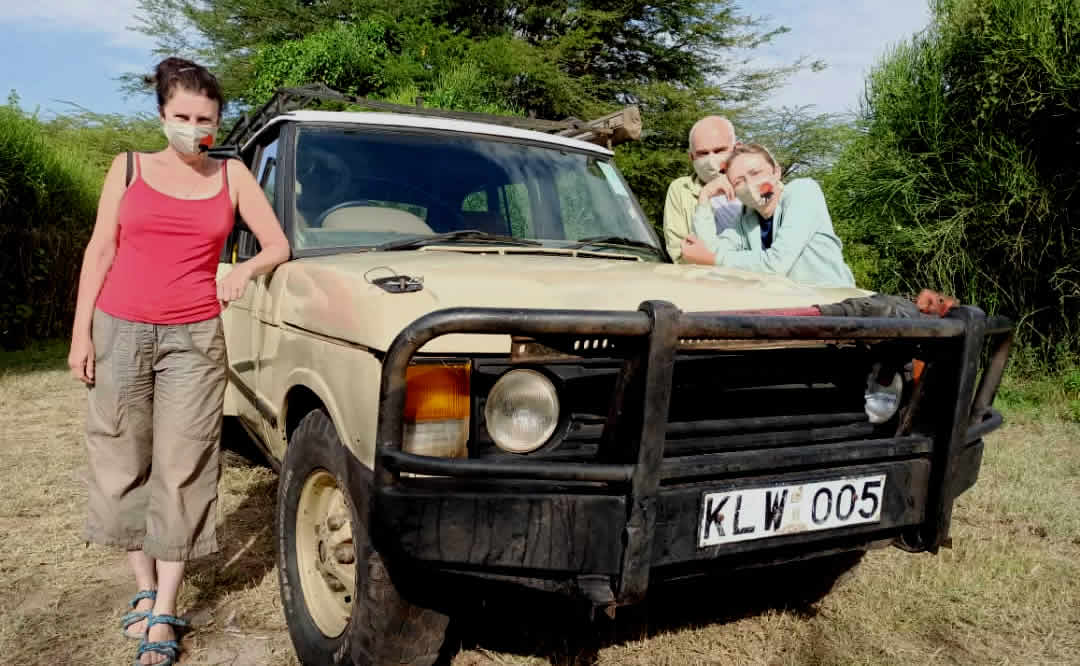 The astonishing wildlife region of Masai Mara offers a glimpse into a truly wildlife environment and a chance to see the Big four, say the Lions, Leopards, African elephants and the Cape Buffaloes.
The astonishing wildlife region of Masai Mara offers a glimpse into a truly wildlife environment and a chance to see the Big four, say the Lions, Leopards, African elephants and the Cape Buffaloes.
The Rhinos are rare to find. A side from the wildlife spotting, you will witness some of the large heards of the Wildebeests, zebras, Grand gazelles, the impalas, giraffes, worth hogs among others.
Obviously, a safari is one among the hardest things to plan. There is a lot to consider, i.e the type of accommodation to choose, type of game park or game reserve to visit in Kenya, when to visit them. It really gets so tiresome to get to know where to start from. Self Drive Kenya is here to help you plan a safari to Kenya and East Africa at large.
Best National Parks To Visit in Kenya
Masai Mara national Reserve
Let us begin with the Big one. Masaai Mara is the authentic Kenya Safari destination, loved for its extensive wildlife game viewing experience and the annual Wildebeest Migration, which secured it as one of the Seven Natural Wonders of Africa, and as one of the ten Wonders of the World.
During the migration, hundreds of thousands of wildebeests migrate from the month of July to November. The massive wildebeest and zebra herds attract constant attention from Africa’s top predators and consequently visitor numbers are high in peak season.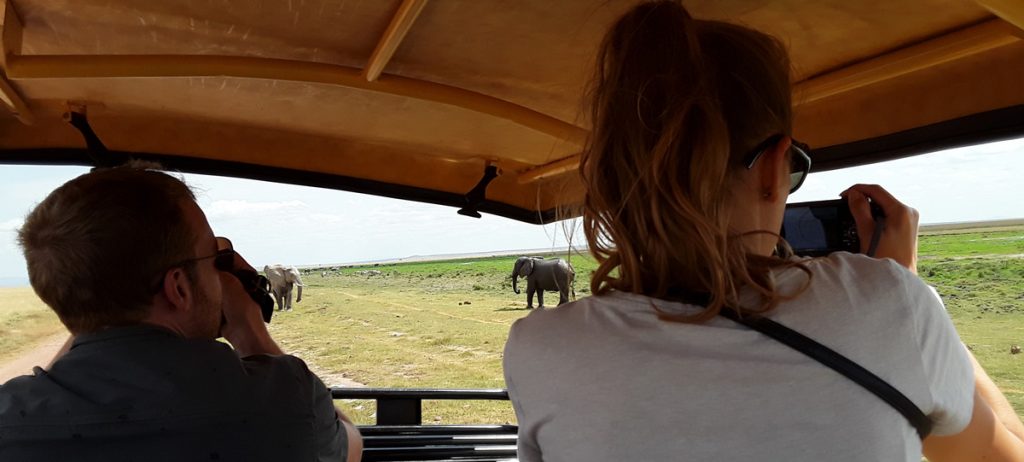
Besides the great Wildebeests Migration, Maasai Mara is one amongst Africa’s most famous and important wildlife conservation and wilderness areas, widely prominent for its exceptional populations of lion, African leopard, cheetah and African bush elephant.
The Greater Mara ecosystem surrounds areas including Maasai Mara National Reserve, the Mara Triangle, and several Maasai Conservancies, including Koiyaki, Lemek, Ol Chorro Oirowua, Mara North, Olkinyei, Siana, Maji Moto, Naikara, Ol Derkesi, Kerinkani, Oloirien, and Kimintet.
Masai Mara attracts the Migration because of its open, flat savannah which produces superb grazing. There are also a few thickets, forests or high peaks: the wide landscape consists of green grass that turns golden during the peak season. The plains attract game like topi, Masai giraffe, and Thomson’s gazelle, which are dotted with occasional flat-topped acacia trees.
Masai Mara Region conservation covers an area of about 1,510 km2 .It is the northernmost section of the Mara-Serengeti ecosystem, which covers some 25,000 km2 (9,700 sq mi) in Tanzania and Kenya. It is bounded by the Serengeti Park to the south, the Siria / Oloololo escarpment to the west, and Masai pastoral ranches to the north, east and west
How do I get there- The Ultimate Guide to Kenya Self Drive Safari Experience
The best way to get to Masai Mara National Reserve is by either road or air. Flying into Jomo Kenyatta International Airport in Nairobi, and then drive to Masai Mara in a 4×4 rental fleet from self drive Kenya. Masai Mara is located just 270km west of Nairobi, thereby taking a 5-6 hours drive, since the road is notoriously bad.
On the other hand, you can also access Masai Mara from Lake Nakuru National Park. The distance is about 235km/150mi and the driving time is roughly six hours.
One can also arrange a chattered flight from Nairobi to Masai mara which may take approximately 45 minutes to 1 hour.
The Northern Part Of Kenya- Kenya Safari Guide
The Northern part of Kenya is composed of drier and hilly landscapes, due to less rains it receives. Yet there incredible safari options such as Samburu National Park, Lewa Wildlife Conservancy for viewing Rhinos regularly and consistently, and Laikipia. These dry conditions have favoured species like gerenuk, the Somali ostrich and Grevy’s zebra. However, on a clear day, you may be lucky enough to see Mount Kenya and Meru.
Explore the Kenya’s Southern Section With Amboseli National Park
Amboseli National Park lies so close to the Border. This is the most interesting region, as it borders with Tanzania, where you can clearly see the Mount Kilimanjaro(has the highest peak in Africa), and the tallest free standing mountain in the world
Due to the wetter climate and the more varied terrain, Amboseli National Park, is a beautiful mix of open savannah, wetlands, woodlands and hills, making it a home for a wide variety of species, from bat-eared foxes to elephants. closeby are the Chyulu Hills and Tsavo East and West National Parks.
Way down south on the coast are some of Kenya’s best beaches. Hit Diani and nearby Galu for top beach lodges and water sports like kitesurfing. Head to Funzi Island for snorkelling and diving.
Visit Nairobi City
Nairobi City and its surrounding has various conservation areas, including the famous Nairobi National Park, Lake Nakuru, Lake Naivasaha and Aberdare mountains. This central region is green and lush during the rainy season while the lakes attract various bird species.
Best Honeymoon Destinations in Kenya-Kenya Safari Guide
Lake Oloidien.
Lake Oloidien is a volcanic crater lake also found at the south of Lake Naivasha. It is a small serene paradise that may often be overlooked has brilliant activities to its name. It is the place to go if you are looking to relax in a tranquil yet awe-inspiring environment. It has a grand bird-life great for bird watchers and a very comfortable ground for camping. You are likely to meet hippos and flamingoes and also indulge in hours of fishing and boat riding.
Crescent Island Game Park.
Crescent Island Game Park in Naivasha’s best-kept secret. It is a peninsula or island on the eastern side of Lake Naivasha. Surrounded by water, it is accessible by boat from East or West. Crescent Island is the ultimate place to give you that game park experience. Through walking on foot, you get to interact with the wild game up close. It is very serene with breathtaking sunsets and very scenic. If you are the animal lover, spoil yourself with this chance to be in the midst of Giraffes or Wildebeests as they graze.It definitely serves well as a treat to the family.
Boats should charge for the whole boat and not per person. USD$40
Park Entrance.
East African Citizens (adults) 800KSh
East African students and children 400 KSh
East African Residents (adults) 1000 KSh
East African students and children 500 KSh
Nonresident adults USD$30
Nonresident students and children $20.
OPEN at 8.30 am – CLOSED at 6 pm.
Lake Bogoria National Reserve
Lake Bogoria is a saline, alkaline lake and lies just south of Lake Baringo. With its ideal conditions, it is home to one of the world’s largest populations of lesser flamingoes. Due to the lake’s alkalinity, blue-green algae grow well, this, in turn, feeds the flamingoes. At times the number of flamingoes feeding in the lake may be as many as two million – creating a wonderful undulating blaze of pink as the flamingoes go about their feeding. This scene of brilliant pink flamingoes by the millions is only found in the Rift Valley Lakes of Kenya, and so is not replicated anywhere else in the world, due to the very specific environment needed by the birds.
Geysers and Hot Springs
The ground in this area is formed geologically from recent volcanic rocks from the Miocene – Pleistocene era. Around Bogoria there are some 200 hot springs with water temperatures from 39 to 98.5C. Nearly all these springs are close to the lake or are inside the lake. The hot springs, in general, have a high content of carbon dioxide, this causes the wild boiling of the springs.
Park Entrance.
East African Citizens (adults) 300KSh
East African students and children 200 KSh
East African Residents (adults) 500 KSh
East African students and children 300 KSh
Nonresident adults USD$50
Nonresident students and children $25.
Nearby Lake Baringo is rocky and wild, is rich with algae on which its large flocks of flamingoes feed. The birdwatching is unsurpassed, and you’ll be looking for nightjars, Goliath herons, and hornbills amongst its over 400 species of avian life.
The local community charges a small conservation fee of 100 Ksh for citizens and residents and 200 Ksh for foreigners.Boat ride $40
Kakamega forest
It is the only tropical rain forest in Kenya that use to stretch from West Africa to East Africa in Western Kenya.
Kakamega forest national reserve is very unique with a lot of wildlife that allows you to explore on foot, hiking watching birds.
This beautiful forest is home to various mammals including bush pigs, giant forest hedgehogs, colobus monkeys, Debrazzar monkeys, and pottos. Some of the birds to be seen here include the Blue Headed Bee Eater, Black Billed Turaco, Turner’s Eremomela and Grey Parrots.
Bird watching, hiking, and rock climbing can be enjoyed here in the serenity of the forest that time forgot. butterflies, very old massive rain forest trees, massive strangler fic trees, and primates.
Park Entrance.
East African Citizens (adults) 300KSh
East African students and children 125 KSh
East African Residents (adults) 600 KSh
East African students and children 255 KSh
Nonresident adults USD$22
Nonresident students and children $13.
Places to visit in Nairobi
Nairobi National Park
The only park in the city of the Sun Nairobi.Scattered acacia bush play host to a wide variety of wildlife including the endangered black rhino, lions, leopards, cheetahs, hyenas, buffaloes, giraffes and a diverse birdlife with over 400 species recorded. Visitors can enjoy the park’s picnic sites, three campsites and the walking trails for hikers.
Unlike many other, the setting here features many walking trails There is a guided walking trail to the hippo pool to view these immense creatures and possibly crocodile as well.
As we follow these trails and wildlife tracks you spot white and black rhino, leopard, lion, cheetah, buffalo and more.
Also, you should not miss special the Ivory Burning Monument. Here at this historic spot ton of ivory seized from poachers have been publicly burned to protest the ivory trade and as a commitment to protect the country’s elephants.
operating Hours:
The park is open from 0600 hrs. to 1800 hrs. daily.
Park Entrance.
East African Citizens (adults) 430KSh
East African students and children 215 KSh
East African Residents (adults) 1030 KSh
East African students and children 515 KSh
Nonresident adults USD$43
Nonresident students and children $22.
Karen Blixen Museum
Karen Blixen Museum was once the centerpiece of a farm at the foot of the Ngong Hills owned by Danish Author Karen and her Swedish Husband, Baron Bror von Blixen Fincke, the plantation was where Blixen chronicled her time in colonial Africa in her renowned literary works. We’ll visit the rooms where she lived and worked. On display – relics from her life as well as props from the legendary movie. We’ll also learn more about Kenya’s colonial history Located 10km from the city center, the Museum belongs to a different time period in the history of Kenya. The farmhouse gained international fame with the release of the movie ‘Out of Africa’ an Oscar-winning film based on Karen’s autobiography by the same title.
The Museum is open to the public every day from 9:30 am to 6:00 pm including weekends and public holidays. Guided tours are available at all times.
Made famous by the hit movie “Out of Africa” starring Meryl Streep and Robert Redford, this plantation homestead is where that story began. We’ll start our tour visiting this expansive farmhouse and grounds where Karen Blixen established a coffee plantation and spent time with her lover, the English hunter, Denys Finch-Hatton.
Park Entrance.
East African Citizens (adults) 200KSh
East African students and children 100 KSh
East African Residents (adults) 600 KSh
East African students and children 400 KSh
Nonresident adults USD$12
Nonresident students and children $6.
David Sheldrick Elephant Orphanage
Best known for our work to protect elephants, the Sheldrick Wildlife Trust (SWT) operates the most successful orphan elephant rescue and rehabilitation program in the world. Can see dozens of baby elephants being fed from giant milk bottles right before you. And then after the feeding, watch the elephant babies roll about in the mud, playing, frolicking like young children everywhere.
This world-renowned sanctuary rescues orphaned elephants throughout Africa and hand raises them with expertise and love. The Sheldrick Family has been taking in and caring for these orphaned babies for over forty years. Over 200 have now been rescued and you can experience up close the expressions of compassion and care in this very special place. You can Adopt an orphan elephant, rhino or giraffe for yourself or as a gift – offering life and hope to an animal in need or make a donation as little as US$50 a year.
Open to the Public every day from 11.00 am to 12:00 pm including weekends and public holidays.
The Entry Fee is USD 5 per person [ adult or child] or approximately Ksh 500 per person in Kenya shillings.
Giraffe Centre
Giraffe Centre, you can climb up the feeding tower and hand-feed a food pellet to an inquisitive giraffe. Some lucky visitors have been known to get a giraffe kiss! The Centre is a refuge for the endangered Rothschild’s giraffe. Here we’ll learn about this beautiful species at the special Information Centre. You may also find yourself surrounded by dozens of schoolchildren, as this is a favorite outing for Kenya’s youngsters.
Giraffe Centre is open from 9 AM to 5 PM
Park Entrance.
East African Citizens (adults) 400KSh
East African students and children 200 KSh
East African Residents (adults) 400 KSh
East African students and children 200 KSh
Nonresident adults USD$15
Nonresident students and children $7.5
Kazuri Beads
KAZURI, which means “small and beautiful” in Swahili, began in 1975 as a tiny workshop experimenting on making handmade beads. The factory is located in what used to be part of the Karen Blixen Estate (of the Academy Award-winning film “Out of Africa” fame).
It gives opportunities for disadvantaged members of Kenyan society and in order to achieve this, we must produce top quality Hand-made and Hand-painted Ceramic Jewelry and Pottery. This handiwork is the creation of hundreds of determined and skilled women who craft these ceramic beads, making artistic jewelry that’s seen and sold all over the world. Begun in 1975 with just two single mothers, the center quickly grew as an enterprise
NAIROBI NATIONAL MUSEUM
The museum is open throughout the year from 8:30 am-17:300pm.
Nairobi National Museum is located at the Museum Hill, approximately 10 minutes drive from the Nairobi city centre accessible both by public and private means. Built in 1929, this is the flagship museum for the National Museums of Kenya, housing celebrated collections of Kenya’s History, Nature, Culture and Contemporary Art.
Offering visitor’s with Kenya’s rich heritage, the museum is also well known as a unique events venue, for the appreciation of Kenya’s heritage amidst workshops, cocktails, conferences and other functions.
Park Entrance.
East African Citizens (adults) 200KSh
East African students and children 100 KSh
East African Residents (adults) 600 KSh
East African students and children 400 KSh
Nonresident adults USD$12
Nonresident students and children $6
BOMAS OF KENYA
Enjoy the rich traditional music accompanied by dance at this cultural center, then take a guided tour of the different bomas (huts) within the compound.Our repertoire consists of over 50 dances from different ethnic communities. With live percussion, string and wind instruments, and diverse, authentic and energetic dancing, BomasHarambee Dancers will take you on a journey through Kenya’s past and present.
Park Entrance.
East African Citizens (adults) 200KSh
East African students and children 50 KSh
East African Residents (adults) 300 KSh
East African students and children 200 KSh
Nonresident adults USD$10
Nonresident students and children $5
Kiambethu Tea Farm
Situated at 7,200 ft. in Limuru, Kiambethu was bought and farmed by AB McDonell in 1910. He was a pioneer in the tea industry, and was one of the first to make and sell tea commercially in Kenya – now one of Kenya’s largest exports.
Five generations have lived on the farm and it is currently run by his granddaughter Fiona Vernon. The farmhouse is set within beautiful gardens surrounded by acres of tea and indigenous forest – home to the Colobus monkey.
We offer daily tours starting at 11 am and cream teas from 3.30 pm.
TOUR
Arrive at 11 am and over a cup of tea or coffee the history of the farm and the process of making tea is informally explained, followed by an opportunity to see tea in the field.
Then take a walk in the indigenous forest with our resident Kenyan guide who will identify the plants and explain how they are traditionally used. Look out for the Colobus monkeys close up and wander in the gardens which are home to a wide variety of birds and flowers.
Return to the house to enjoy a pre-lunch drink on the verandah with sweeping views across the tea fields to the Ngong Hills.
Lunch is served at about 1 pm and is a three-course buffet lunch from our set menu prepared with vegetables from the garden and desserts are topped with cream from our herd of Channel Island cows.
Cost is 3,500Ksh per person all-inclusive, children under 12 are half price.
AFTER VISIT THE PARK YOU CAN UNWIND IN COAST REGION ALONG INDIAN OCEAN
Mombasa Island, Mombasa Port, Nyali, Bamburi, Shanzu, Kikambala or Kilifi Beach resorts
Malindi or Watamu OR choose Diani Beach.
This stunning stretch of white sand paradise may be the finest way to end your tour. with optional visit to samburu National Park.

